Earlier this month, Dell added Intel Broadwell support to their line of four-socket PowerEdge servers. We’ve previously seen what the new CPUs can do for their mainline dual-processor systems; now we turn our attention to the 1U PowerEdge FC830 blade that houses itself within the FX2 chassis. Launched today, the new Intel E5-4669 v4 processors are 2.2GHz and bring 22 cores to bear; 88 cores in a fully populated system. Both the FC830 and the more standard 2U R830 get the E5-4600 v4 family, while the larger R930 can now leverage the E7-8800 v4.
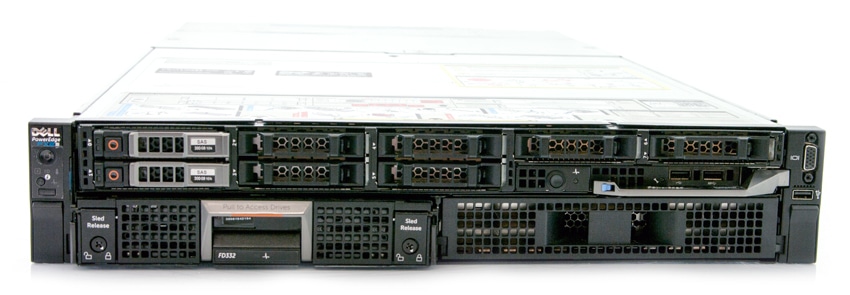
We’ve written at length about the benefits of the FX2 chassis, the variety of ways it can be configured and how management of the system works for both the servers and storage as well as the chassis itself. For this review the goal was simple, swap out the E5-4600 v3s for the newly minted v4s and push the server to the edge. The new E5-4600 come with some pretty impressive performance claims (2.6x that of similar servers from a few years ago), higher cores and thread counts, better security, higher power efficiency, and a large cache. We are using the Intel Xeon E5-4669 v4 that has a 2.2GHz frequency, 55MB of cache, memory speed of 2400 MHz, and Intel QPI link spend of 9.6GT/s.
PowerEdge FC830 Performance
To get the FC830 properly outfitted to stress the processing power with our MySQL TPC-C workload, we filled it with 768GB of RAM, 8TB of NVMe flash and connected it to both of our all-flash EMC ScaleIO systems over 10GbE. We then prepped our favorite application workload for testing maximum I/O capabilities, loading the Sysbench benchmark onto the FC830. We wanted to see exactly how much the server could handle while monitoring CPU utilization.
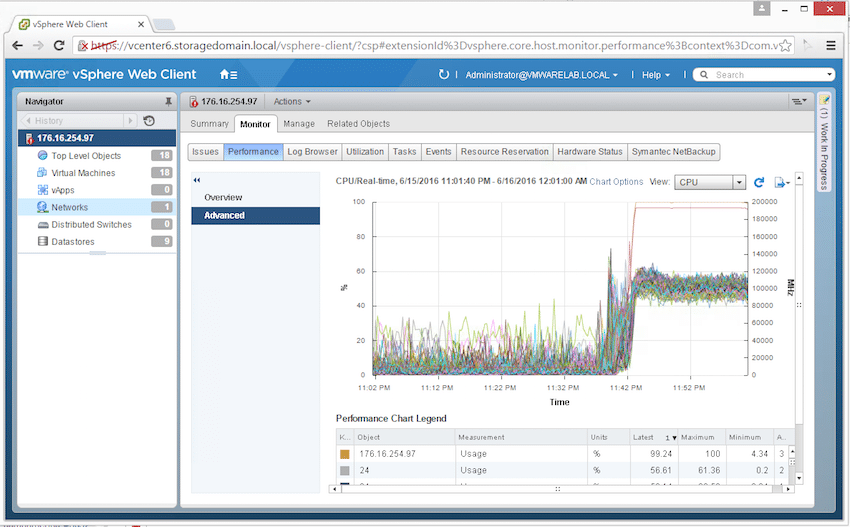
Our Sysbench test measures average TPS (Transactions Per Second), average latency, as well as average 99th percentile latency at a peak load of 32 threads. Looking at average TPS the FC830 was able to hit 17,635 TPS with an 18VM average with total CPU saturation.
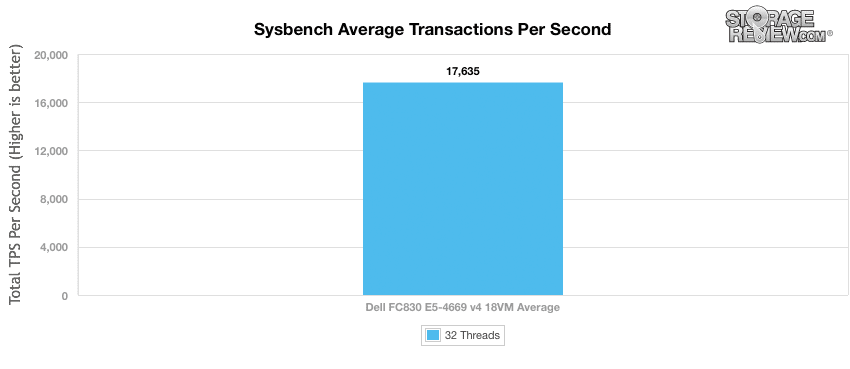
Looking at average latency on the Sysbench, with an 18VM average the FC830 was able to hit 34.3ms per VM.
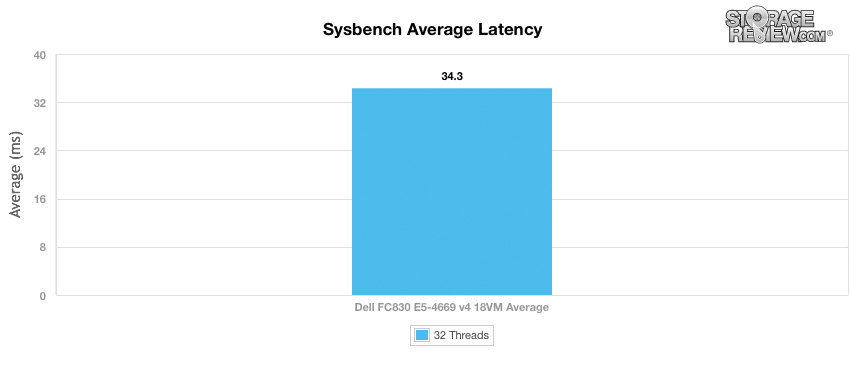
In terms of our worst-case MySQL latency scenario (99th percentile latency), the FC830 was able to hit 73ms across an 18VM average.
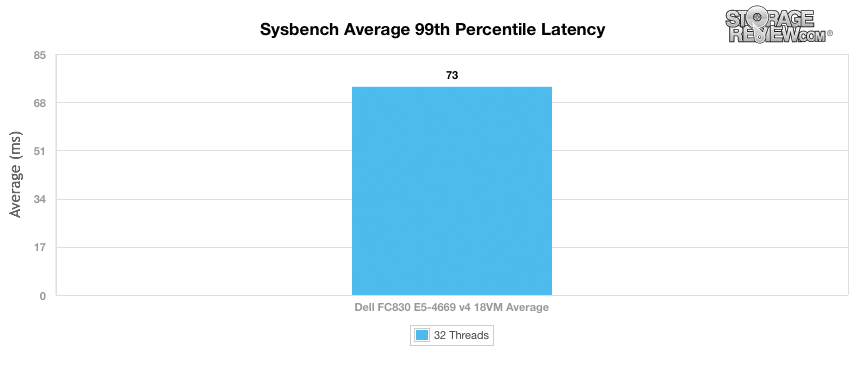
Conclusion
The Dell PowerEdge FC830 node, now offering Intel Broadwell support, continues to offer amazing performance in an incredibly small 1U footprint. Dell’s ease of use via intuitive management and flexibility in configuration continue to be hallmarks of the FX2 chassis and fundamental to its success in everything from hyperconverged infrastructure to ultra-dense configurations for hyperscale computing. In our testing roughly a year after the first look leaves us no less impressed. Wrapped around the new Intel E5-4600 v4 CPUs, the FC830 juiced full of RAM, NVMe storage and high-speed shared storage, delivered impressive results.
Looking at performance, we ran the Sysbench MySQL application benchmark on the FC830. For our Sysbench test we looked at an 18VM average on all three aspects of our test, the average TPS (Transactions Per Second), average latency, as well as average 99th percentile latency. The 18VM average gave the FC830 a TPS score of 17,635. Switching over to look at latency we saw an average latency of 34.3ms and a worst-case scenario latency of only 73ms. We’ve seen numbers this impressive before, but with a cluster of servers, not just a single 1U node.
Discuss this review




 Amazon
Amazon